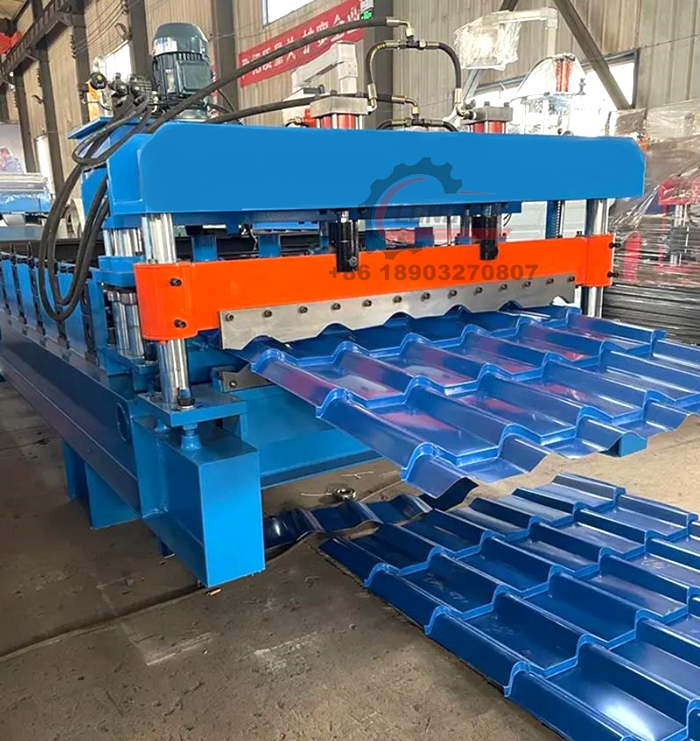Angle Channel Roll Forming Equipment for Precision Metal Fabrication Solutions
The Angle Channel Roll Forming Machine Revolutionizing Metal Fabrication
Roll forming is a highly efficient process used in the metalworking industry to create long lengths of products with a consistent cross-section. Among the various types of roll forming machines available, the angle channel roll forming machine stands out due to its versatility and efficiency in producing angle channels used in a myriad of applications, including construction, automotive, and manufacturing.
Understanding the Angle Channel Roll Forming Process
An angle channel is a type of structural steel shape, often used in construction to provide support and stability. It typically features a right angle and is available in various dimensions, enabling it to cater to specific design requirements. The angle channel roll forming machine is designed to convert flat metal sheets into these vertical components through a series of shape-forming rolls.
The process begins with the feeding of flat metal sheets, usually made of steel, aluminum, or other alloy. These sheets are then guided through a series of rollers that progressively shape the material into the desired angle channel profile. The key to this process lies in its continuous operation, which allows for high production rates and minimal waste. Additionally, the machine can be adjusted to produce different sizes and shapes, making it highly adaptable to changing project requirements.
Key Components of the Angle Channel Roll Forming Machine
An angle channel roll forming machine consists of several critical components that contribute to its functionality and efficiency
1. Rollers and Dies The rollers are designed specifically to shape the metal sheets into angle channels. Each roll progressively shapes the metal until it reaches the final profile. Dies may also be used to ensure accurate and consistent formation.
2. Feeding Mechanism This component ensures a smooth and precise feeding of the metal sheets into the machine. It controls the speed and tension of the material, which is crucial for maintaining the quality of the final product.
3. Cutting System Once the formed angle channel reaches the desired length, it is cut using a cutting system. This can be a mechanical shear or a laser cutting system, depending on the machine design and requirements.
angle channel roll forming machine

4. Control Panel The control panel allows the operator to set parameters such as the feed rate, roller adjustments, and cutting length. Advanced machines may include automated controls for enhanced efficiency.
Advantages of Using Angle Channel Roll Forming Machines
1. High Production Efficiency One of the primary benefits of angle channel roll forming machines is their ability to produce large volumes of products in a relatively short time. This is particularly advantageous for businesses that require consistent output to meet market demand.
2. Less Material Waste Roll forming processes produce less waste compared to other metal forming methods, such as stamping or cutting. The continuous nature of roll forming utilizes the entire length of the material, minimizing scrap.
3. Versatility These machines can be adjusted to produce various profiles and sizes, encompassing different types of angle channels. This flexibility allows manufacturers to respond quickly to changing customer needs.
4. Enhanced Strength and Durability The formed angle channels have superior strength characteristics due to the cold working involved in the roll forming process. This makes them suitable for demanding applications in construction and structural support.
Applications of Angle Channel Roll Forming Machines
Angle channels are integral in numerous industries. In construction, they are used for framing, bracing, and providing support for structures. In the automotive industry, angle channels serve various purposes, including reinforcing body panels and manufacturing lightweight vehicle components. Additionally, angle channels are utilized in shelving, racking systems, and machinery components, showcasing their widespread applicability.
Conclusion
The angle channel roll forming machine represents an essential advancement in the field of metal fabrication. Its ability to efficiently produce durable and high-quality angle channels has made it a staple in industries where structural integrity is paramount. As technology continues to evolve, these machines will undoubtedly become even more sophisticated, further enhancing their role in modern manufacturing processes.
-
Roof Panel Machines: Buying Guide, Types, and PricingNewsJul.04, 2025
-
Purlin Machines: Types, Features, and Pricing GuideNewsJul.04, 2025
-
Metal Embossing Machines: Types, Applications, and Buying GuideNewsJul.04, 2025
-
Gutter Machines: Features, Types, and Cost BreakdownNewsJul.04, 2025
-
Cut to Length Line: Overview, Equipment, and Buying GuideNewsJul.04, 2025
-
Auto Stacker: Features, Applications, and Cost BreakdownNewsJul.04, 2025
-
Top Drywall Profile Machine Models for SaleNewsJun.05, 2025








